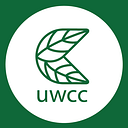Hidden Plastics
By: Ariana Lim
With many of us trying to reduce our plastic waste, we often focus our energy and attention on the common plastics — the single-use containers, plastic bags, straws, … etc. This is great! Your actions have a greater impact than you think. However, there are many other items that surprisingly contain plastic that you may have not considered before. Here’s a list of “hidden plastic” items to get you thinking. This by no means is an extensive list, so we encourage you to keep doing your own research.
1. Coffee Cups and Aluminum Cans
Did you know that the majority of single-use coffee cups and aluminum cans have a thin layer of plastic on the inside to make them more waterproof (and to avoid corrosion)? Depending on your municipal recycling system, these items may not be properly recycled. Try using your own coffee mug instead of paper coffee cups, and reach for the glass bottles instead of the aluminum cans (although there is also controversy about the carbon footprint of glass).
2. Microfibers
Some of your clothes may contain plastic! Many synthetic materials such as polyester and nylon are made from plastic materials. When washed, tiny bits of these fibers get washed away and enter our water system. Because of their size, it is difficult to filter them out. Try washing these clothes less, buying clothing made with natural materials, or buying a microfiber filter attachment for your washing machine!
3. Teabags
Some tea bags actually contain plastic to help the bag retain its shape in hot water. Although some brands don’t have plastic in their tea bags, an all-around better swap would be loose-leaf tea and a tea infuser/steeper.
4. Chewing gum
Chewing gum can be up to 80% plastic! This makes them difficult to break down naturally. Instead, reach for other candies/mints or a biodegradable gum option.
5. Biodegradable Plastics
I know, I know. They’re called biodegradable plastics for a reason. Depending on the type of biodegradable plastic, it may be just as bad for the environment as regular plastic. A lot of them are only really biodegradable under specific conditions. *cough* greenwashing *cough*. Anyways, beware of these claims and make sure to do your research on these bioplastics!
6. Business Consumables
I’ve had a couple of jobs in the foodservice industry… and let me tell you the amount of plastic waste that is produced is not pretty. Although I can only speak for restaurants, I assume the practices are similar for many other businesses. Consumers often don’t get to see the behind-the-scenes of how their goods are produced. Gloves are routinely changed when working with raw meats. Cups, lids, milk, straws, frozen goods, and basically all items that restaurants use are all packaged in plastic. Some restaurants have strict food safety policies and don’t even allow customers to use their own mugs or containers. I don’t mean to discourage consumers that want to support restaurant businesses. After all, this plastic packaging helps keep everything food-safe!
I hope that this list has got you thinking about some of the plastics that we don’t actually see. As plastic-free July comes to an end, remember that every little act counts. But we encourage you to go further with your research and your efforts to combat plastic pollution!
